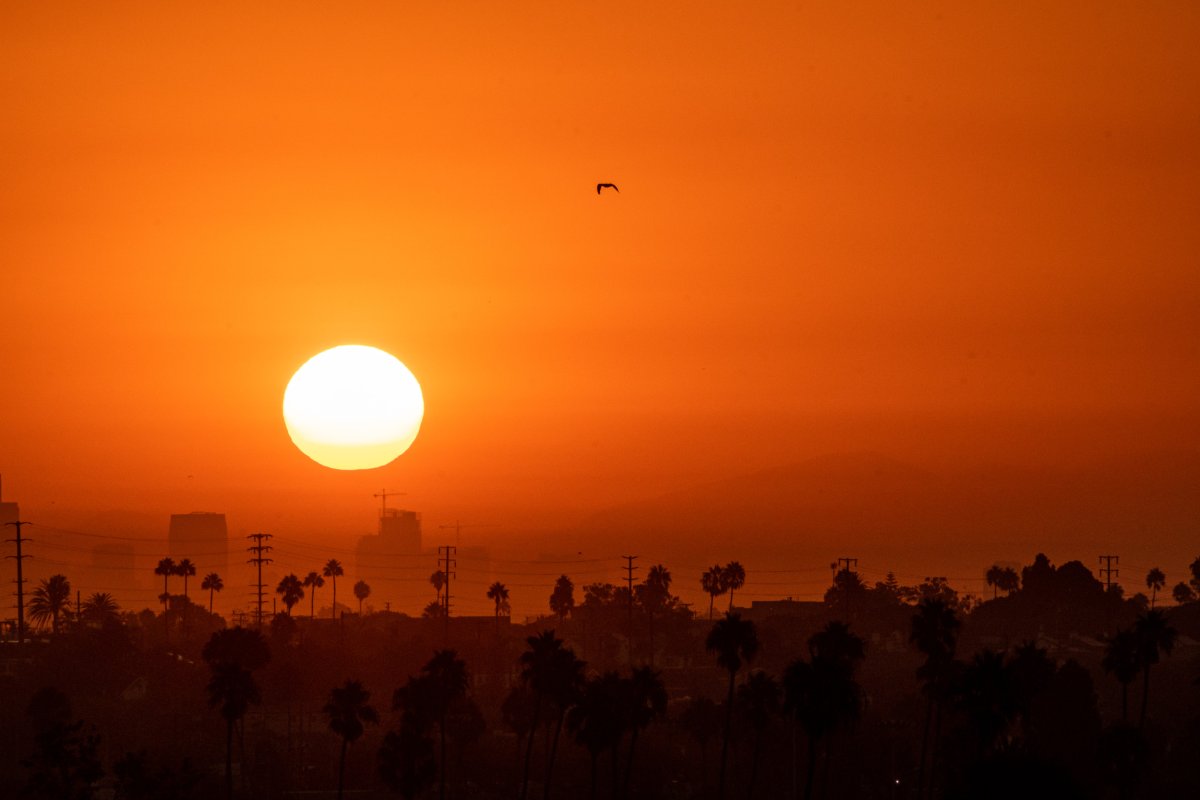-
How to Watch Indiana Fever vs Chicago Sky: Live Stream WNBA, TV Channel - 34 mins ago
-
Could Mauricio Pochettino leave USMNT for Tottenham?: ‘It’s not realistic’ - 51 mins ago
-
Jennifer Garner admits doctors talked her out of plastic surgery - about 1 hour ago
-
MLB Insider Lists Yankees Interim Closer as Potential Trade Candidate - about 1 hour ago
-
A star and a fighter for humanity too - 2 hours ago
-
Austin Wells crushes a three-run homer as Yankees grab 3-1 lead over Red Sox - 2 hours ago
-
Trump administration is deploying National Guard troops to L.A. - 2 hours ago
-
Cubs Offense Could Get Better With Addition of This Outfielder - 2 hours ago
-
Brewers' Caleb Durbin blasts a walk-off home run vs. Padres - 2 hours ago
-
How to Watch Dvalishvili vs O’Malley 2: Live Stream UFC 316, TV Channel - 3 hours ago
Map Shows 6 States Where People Told To Stay Out of Sun
An extreme heat wave prompted the National Weather Service (NWS) to issue advisories affecting millions of people across at least five U.S. states—California, Nevada, Montana, Oregon, Arizona and Idaho—with officials warning residents to stay indoors and avoid sun exposure as temperatures soar above 100 degrees Fahrenheit.
Why It Matters
Heat advisories and extreme heat warnings issued by the NWS could impact public health and critical infrastructure in affected regions. High temperatures—combined with little overnight relief—raised the risk of heat exhaustion, heatstroke and wildfires. Vulnerable groups, including children, older adults and those working or living without air conditioning, face heightened danger.
What To Know
The NWS Heat Advisory and Extreme Heat Warning maps confirmed warnings for broad portions of California and parts of Nevada. Although these areas often see temperatures in the triple digits during the summer, this is one of the first heat waves of the season and some people might be unprepared.
In California, dangerous heat was forecast for the Sacramento Valley, Central Valley and inland counties, with the NWS Sacramento office projecting temperatures up to 107. Central California cities—including Merced, Bakersfield and Tulare—faced highs of 106, while the southern valleys and mountainous zones were expected to see heat reaching the low 100s.

johnemac72/Getty
Southern Nevada—including Las Vegas, Pahrump and Death Valley—was placed under an Extreme Heat Watch, with highs between 104 and 115, according to the NWS Las Vegas office.
Extreme heat warnings also stretched into northwest Arizona.
The heat wave spread to Oregon, Idaho and Montana, sparking warnings in the northern states. Along with staying out of the sun, people were advised to wear lightweight clothing and stay hydrated.
Authorities cautioned that the risk of heat-related illness—dizziness, nausea, heavy sweating—would be elevated, especially during afternoon and early evening hours. In addition, NWS officials warned about leaving pets and children unattended in vehicles and noted the increased risk of wildfires because of low humidity and winds.
Hospitals and emergency services in California and Nevada anticipated a possible surge in heat-related medical cases. Michelle Shahbon, emergency room manager at Shasta Regional Medical Center, previously told Newsweek that their team expected an uptick in patients and advised residents to stay hydrated and limit outdoor exposure during peak sunlight hours.
What People Are Saying
NWS meteorologist Brian Conlan, who works at the Missoula, Montana, office, told Newsweek: “While this is probably abnormal for us, many locations are going to be 15, 20, and in some places 25 degrees above normal, it has happened before. Most of the areas that may see their records broken, those records were set in ’86.”
An NWS forecast issued on Friday: ” … record high temperatures will be threatened across interior northern California today, expanding into the Great Basin, Idaho, and as far north as western Montana on Saturday. The anticipated heat in the Southwest for the next couple of days has led to the issuance of Extreme Heat Warnings for the dangerous heat for portions of southernmost Nevada, southeast California, and northwestern most Arizona.”
What Happens Next
The heat wave is expected to last through the weekend and it’s likely that updates will continue to be issued by the NWS. It’s possible that the heat wave could break records in some areas and is coming earlier than expected in some states.
Source link






























